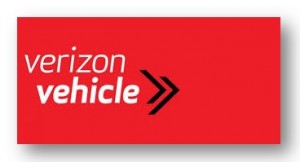You can see it happening pretty much every day in the news – the automotive space is experiencing a renaissance largely due to its new love affair with technology and electronics. We’ve talked extensively on this blog about CES a couple weeks back. And last week, it was the North American International Auto Show – or as it is more affectionately known to those of us who grew up in Motown, the Detroit Auto Show.
Yes, the auto industry has recovered in a big way since the Great Recession (or in Detroit’s case, Depression). And the prospects moving forward seem bright. Besides an improving economy that is driving sales to the best levels since ‘06, the auto companies are driven by innovation, connectivity, and even risk-taking. What was once an industry that moved at a glacial pace, the automotive world is now using technology to affect change at a more rapid rate.
But what kind of impact does this have on consumers, and specifically media companies and the radio broadcasting industry? As we continue to track the sector in our new Techsurvey (in the field as I write this post), our work with Ford on mobile apps, and our time on the floor at conventions like CES, we’re seeing signs that are worth noting.
1. Leasing over buying – The New York Times reports that more than a quarter of new car sales in 2014 were actually leases. Part of this phenomenon can be explained by the obsession with the monthly payment number (aside from what the car costs), but another factor is technology. Because the average car on the road is 11 years-old, a lease deal offers the newest in automotive technology. And because most leases are 2-3 years, consumers can stay ahead of the curve, ensuring the latest and greatest. That should tell us something about the importance of new car features and the consumers who crave the next big thing.
New connectivity features are also appealing to Millennials, the demographic group that is in the auto industry crosshairs. By making WiFi, Bluetooth, and other tech features available on even entry-level vehicles, the auto industry is ensuring its relevance to a generation that has now passed Baby Boomers in size.
 2. Connectivity for everyone – At the NAIAS show, Verizon unveiled a new and potentially very exciting innovation that dovetails to the item about leasing. The telecommunication company wants to connect older vehicles with technology that’s available on new cars. Specifically, for $15 a month, Verizon Vehicle offers a suite of connectivity features that covers everything from vehicle performance to travel assistance (think OnStar) to anti-theft software. In this way, drivers who are attached to their vehicles or simply cannot afford a new one can still enjoy modern technology.
2. Connectivity for everyone – At the NAIAS show, Verizon unveiled a new and potentially very exciting innovation that dovetails to the item about leasing. The telecommunication company wants to connect older vehicles with technology that’s available on new cars. Specifically, for $15 a month, Verizon Vehicle offers a suite of connectivity features that covers everything from vehicle performance to travel assistance (think OnStar) to anti-theft software. In this way, drivers who are attached to their vehicles or simply cannot afford a new one can still enjoy modern technology.
Again, this move by Verizon also portends an increased emphasis on the ability to update older vehicles with new, modern connectivity features. Not everyone can afford a new car or truck, but having the latest and greatest in entertainment and information will have appeal to millions of consumers.
3. “Connected cars” are overtaking video games at CES – As Ford CEO Mark Fields reminded attendees, “We’ve come a long way from a single car on a carpet.” But that’s exactly what the Ford “exhibit” looked like just 8 years ago at CES when the automaker displayed a single Ford Taurus in a small space.
This year, 10 automakers occupied thousands of square feet in the Las Vegas Convention Center. And as we know, Google and Android are rapidly becoming players in the “center stack.” Amazingly, many of the concepts that seemed a decade away are now rapidly coming to market.
So-called “self-driving cars” are a case in point. It was just a few short years ago at Convergence when Nolan Bushnell stalked around the stage promising that radio would be challenged by cars that drive themselves, freeing up time for the “driver” to do other things from surfing the web to watching videos. Last year, Bushnell was thinking that autonomous cars would be a reality in five years. It’s coming sooner than that.
The Mercedes-Benz concept F105 Luxury In Motion vehicle stirred up much buzz at CES (see the video below), and GM’s Mary Barra is promising that the new “Super Cruise” semi-autonomous 2017 Cadillac CTS will be available sooner than anyone thought.
(Email recipients can watch the video by clicking here.)
So as the automotive space continues to accelerate at an amazingly fast pace, where does radio stand? Strategy Analytics analyst and consultant Roger Lanctot recently wrote in a blog post that while broadcast radio will be present in the coming year’s vehicles, it will be harder for consumers to find.
He notes that between the technology and the host of other alternatives competing at a fast rate to replicate the AM/FM radio experience, radio broadcasting will feel the automotive pressure like never before. And here’s Roger’s key quote:
“The challenge for broadcasters is to seize the reins of innovation in 2015. Consumers remain fans of broadcast radio content, but simply can’t find it as easily in connected cars as they once could.”
I am very excited to share Techsurvey11 with many of you. As you might expect, we have included many questions this year about the dealer experience with “connected cars” – everything from training to usage to satisfaction. This data will help us better understand the accelerated pace of media content and cars.
Tomorrow, we’ll take a field trip to a car dealership in Hampton Roads, Virginia, to learn what’s more interesting – what’s in the “center stacks” of news cars or how radio people react to seeing this new technology for the first time.
Enjoy the ride.
- Media And Technology In 2025: Believe It Or Not! - April 18, 2025
- In Radio, You Just Never Know - April 17, 2025
- The Secret To Making A Great Podcast (And Great Radio) - April 16, 2025





Seriously…radio people seeing new car tech for the first time?
Compare innovation in the auto industry to that of the radio industry in the 8 years since Ford showed up at CES with one Taurus. How does iHeartRadio – generally cited as the poster child for radio’s innovation and online presence- “stack up” (pun intended) to self driving cars?
I stand by my prediction – radio’s tipping point will be 5 years from now. Tick, tick, tick…
Bob, it is sad but true that radio has fallen behind the automotive curve despite efforts to raise awareness of the threat to both consumption and sales. We will continue to beat the drum, and I can tell you that more and more companies are getting the message. I hear the ticking, too.